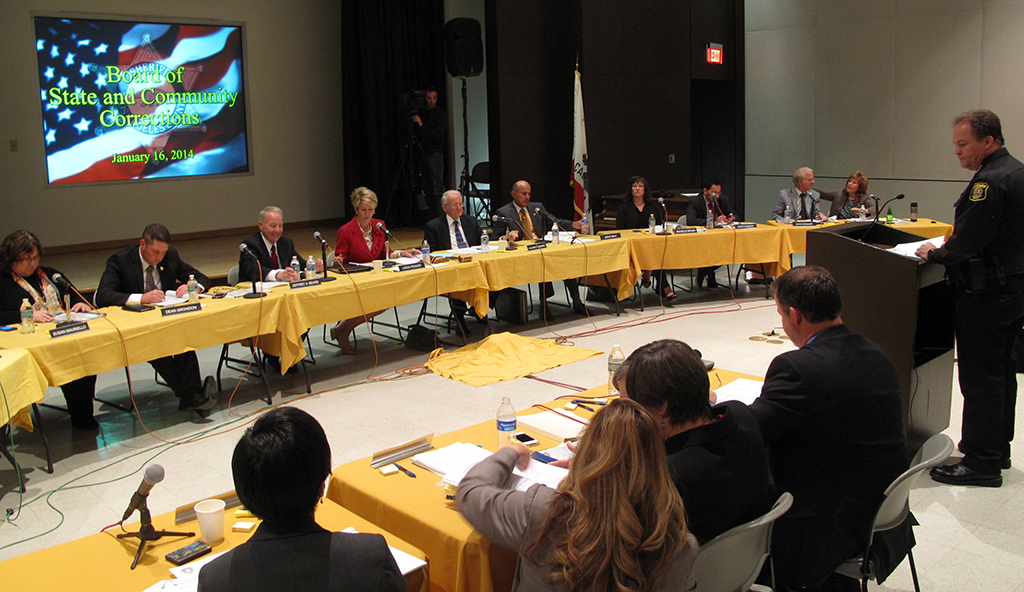California youth advocates are fairly pleased with upcoming revisions to the minimum standards governing incarcerated youth but feel there is more work to be done on staff-to-youth ratios and pepper spraying.
 “Leadership was needed from the Board [of State and Community Corrections] to move California away from relying on dangerous, inhumane and counterproductive practices,” said Dominique Nong, a senior policy associate at Children’s Defense Fund-California. “Other states have shown that chemical spray isn’t necessary to run safe facilities.”
“Leadership was needed from the Board [of State and Community Corrections] to move California away from relying on dangerous, inhumane and counterproductive practices,” said Dominique Nong, a senior policy associate at Children’s Defense Fund-California. “Other states have shown that chemical spray isn’t necessary to run safe facilities.”
Last week the board accepted the Executive Steering Committee’s November recommendations. It did not incorporate additional revisions on staff ratios and pepper spraying suggested by a coalition of youth justice advocates from the Center on Juvenile and Criminal Justice, the Youth Law Center and other organizations.
Nong said the use of pepper spray would be unnecessary if more attention were invested in areas like de-escalation and crisis intervention and staffing was increased.
California is currently one of only six states in the United States that allow officers in youth facilities to routinely carry pepper spray; the other five are Illinois, Indiana, Minnesota, South Carolina and Texas. While a few other states allow its use in some capacity, 35 states have banned pepper spray in juvenile detention halls altogether.

Francisco Martines
Francisco Martines, a juvenile justice advocate and student at Santa Monica College, said he has suffered asthmatic symptoms after a staff person used pepper spray on someone else in a youth facility in 2009.
“It affected the whole room,” he said. “The chemicals thinned the air and made it hard for me to breathe; I felt like the air was being taken out of me.”
Despite telling the officers how he felt, they assumed he was making it up so he could get out of his room. Martines did not receive medical attention until hours later when it became clear he was struggling to breathe.
Under the board-approved revisions, youth facilities would be required to limit the use of pepper spray to instances when there was “imminent threat to the youth’s safety or the safety of others and only when de-escalation efforts have been unsuccessful or are not reasonably possible.”
The coalition had also recommended a mandated staff-to-youth ratio of 1:8 during the day and 1:16 during sleeping hours. This was to reduce the likelihood of youth-on-youth violence, sexual assault and to increase staff members’ ability to engage more fully in trauma-informed approaches.
The board opted to keep the current 1:10 ratio because some members of the steering committee had expressed concerns that “fiscal considerations would strap agencies, lead to fewer habilitative programs, and could lead to the closing of some small-county institutions.”
Israel Villa, the program and policy coordinator for Motivating Individual Leadership for Public Advancement and a formerly incarcerated youth, said he feels conflicted about this decision.
“I know money is a tough issue, but at the end of the day, the issue of staffing ratios is extraordinarily important,” he said. “They're often quick to cite safety and security when it comes to pepper spray, but on this topic, the fiscal aspect is apparently more important than safety and security.”
In the future, constituents in California should contact their assembly members to draw more attention to the concerns of incarcerated youth, he said.
The public will have 45 days to submit comments before regulations become final. Notice of the comment period will be posted on the board’s website.
The comments become part of the official rulemaking file and will be responded to in the final statement of reasons before the regulations become final. If substantial changes are made as a result of public comment, there will be a further 15-day public comment period for the updated regulation language.
This story has been updated.
Hello. We have a small favor to ask. Advertising revenues across the media are falling fast. You can see why we need to ask for your help. Our independent journalism on the juvenile justice system takes a lot of time, money and hard work to produce. But we believe it’s crucial — and we think you agree.
If everyone who reads our reporting helps to pay for it, our future would be much more secure. Every bit helps.
Thanks for listening.
